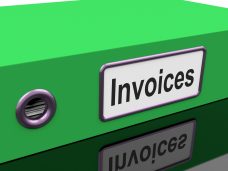Today many organizations use a standardized process called procure to pay (“P2P”), designed to streamline purchasing and account payable related activities. In the last couple of years, many companies worked to improve this process to reduce their costs and to improve cash flow. There are many elements of the P2P process and each company could follow its specific rules but mainly, the P2P process is comprised of below the steps:
- requirement identification
- purchase order (“PO”) authorization
- identification of suppliers
- inquiries for needed goods/services
- quotation
- vendor selection
- the purchase order is sent to the vendor
- delivery of goods/services
- invoice recording
- purchase order matching
- vendor payment
As you can see, the process is complex, with many steps which are interconnected. Today we are focusing on purchase order matching.
Purchase Order matching is the practice of matching vendor invoice with its associated purchase order and receiving a receipt. Differences between these documents are compared with the accepted tolerances (thresholds).
This activity is performed by the accounts payable department and there are different approaches:
- 2-way matching,
- 3-way matching.
- 4-way matching
Since 2-way and 3-way matching are most common, we will discuss them in detail.
Let’s start with a few words on the most relevant documents that are used in Purchase Order Matching:
- Purchase Order: it is sent from the purchaser to the supplier and its main role is to authorize the purchase. It is a good practice to include at least the following information on the purchasing order: purchasing company identity info, issued date, concise description of goods and services along with the corresponding quantities, price, delivery address, payment details and purchase order number.
- Invoice: it is sent from supplier to purchaser. An invoice will include much of the information from purchase order plus invoice number and payment schedule.
- Order receipt: it represents the proof for delivery,
Before paying an invoice, the purchaser has to verify the quantities and prices to ensure that the goods/services ordered (information found in the purchase order) match the amount of money charged by the supplier (information found in the invoice). Also, the purchaser could check if goods/services ordered matches the actual goods received (information found in the order receipt).
If accounts payables find an issue the payment is put on hold until the problem is solved.
Why Use Purchase Order Matching?
There is a big incentive for each and every organization to use purchase order matching. Simply put, purchase order matching saves money.
By checking and matching the information on the purchase order, invoice and order receipt, the purchaser ensures that:
- the goods/services are not overpaid,
- the acquired goods/services are not duplicated,
- no payment is made for undelivered goods/services.
It is also worth mentioning that, purchase order matching is good preparation for audits.



